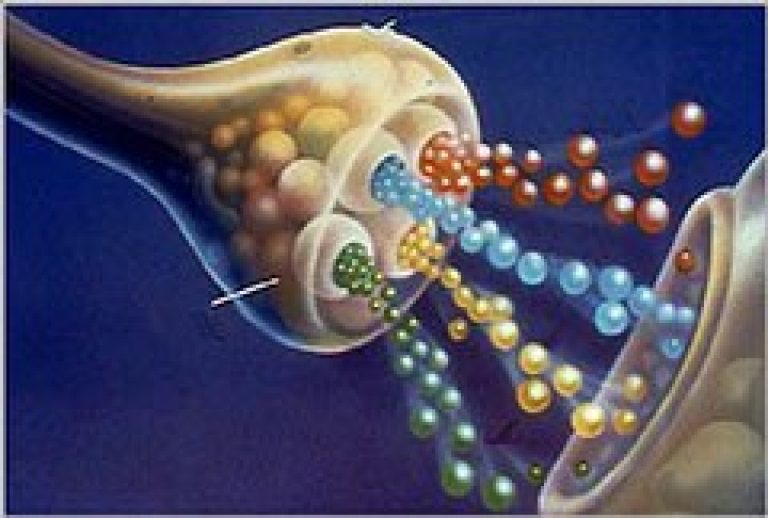Top 5 Prebiotics Foods for a Healthy Gut Microbiome
Lately there has been a lot hype about probiotics being an essential part of maintaining one’s digestive, immune and even mood health, but something that fails to get mentioned nearly as much is the importance of Prebiotics. Prebiotics may even be more important than probiotics for our digestive, immune and mood health as they dictate the populations of bacteria that grow in our intestines in direct ways.
This article will share with you why you should be eating prebiotics and my top 5 picks of best prebiotic foods to boost your whole body health, including one that you might want to avoid before going on a first date.
What are prebiotics?
Prebiotic foods are whole foods that contain fiber which acts as food for beneficial bacteria in our guts. These prebiotic foods basically act as fertilizer and can cause blooms of these “good bacteria” to occur, which help improve our immune system, digestion, and even mood. The population of microorganisms that live in our digestive tract is called the microbiome and consists of 10 trillion bacterial cells. There are more bacterial cells in our guts than there are human cells in our whole body! The more diversity of species we have, the better our health is.
Many prebiotic foods contain fibers such as inulin, Fructooligosaccharides (FOS) and resistant starches. These are generally fibers that we can’t digest, but the microbes in our guts can eat them. As a result, they produce metabolic byproducts that act as fuel for our cells, modulating many important processes in our guts. Fibers fermented by bacteria in our guts get converted to short-chain fatty acids such as butyrate, acetate, and proprienate. These fatty acids are crucial to immune health and cellular energy which can keep you feeling vibrant and balanced.
Not all fibers can be classified as prebiotic; however, most prebiotics can be classified as dietary fibers. For example, cellulose, a common fiber found in plants, is not easily fermented by gut bacteria, but it does affect the rate of fermentation in the gut by accelerating digestive cycles and thus minimizing time that pathogenic bacteria can grow in the intestine. We see something similar happen with psyllium husk, which appears to push the fermentation process deeper into the large intestine, helping reduce small-intestinal bacterial overgrowth.
Why do we want fermentation to happen in the large intestine instead of the small intestine?
Most of our microbiomes organisms live in the large intestine, where they help extract nutrients from food, and protect us from pathogens. By comparison, the small intestine, which comes before the large intestine in the digestive tract, is almost sterile considering it has significantly less bacteria living in it. Sometimes when we have a poor diet high in sugar or an infection, we can get bacterial overgrowths in the small intestine, which can make us feel sick, tired, and develop food allergies.
fibers such as inulin, Fructooligosaccharides (FOS) and resistant starches are the most common components of prebiotics. These molecules are long chains of sugars that are more difficult to digest and require bacteria to breakdown. As opposed to simple sugars like glucose and sucrose that are absorbed into the body and by bacteria immediately after being consumed.
This is one reason why the more resistant a fiber or starch is to being digested, the slower it is digested, and the later in the digestive tract it will be utilized by bacteria for food. We want fiber to pass through our small intestine and make it to our large intestine to be digested by bacteria. When we eat simple carbohydrates instead of complex carbohydrates like fiber, the sugars are eaten by bacteria in our small intestine, rather than our large intestine, and this contributes to small intestinal bacterial overgrowth and disease.
How does our diet influence our microbiome?
This is one of the reasons why our diet is so important to dictating our health. What we eat influences what types of microorganisms live in our guts. A poor diet may feed pathogenic bacteria and make us sick with inflammation, digestive problems and poor immune function. Many diseases start with imbalances in the microbiome such as diabetes, obesity, heart disease, mental illnesses and more.
Everytime we eat, we feed not only ourselves, but trillions of tiny organism too. The standard American diet lacks sufficient fiber compared to the diet of populations living in more rural parts of the world, who get more than 7 times the amount of fiber in their diets from plants. In parts of the world where fiber is consumed in appropriate amounts, the rate of heart disease, cancer, diabetes, obesity, autism and dementia is substantially lower than that of the United States. Science continues to prove that a diet high in different prebiotic fibers promotes a balanced microbiome and good overall health.
What are the best Prebiotic Foods for microbiome health?
Now that you we know what prebiotics are and why they’re so important to our health, let’s learn how to easily add them to our diets so that our bodies and bacteria can live happily and healthily together.
Here are some of my top 5 favorite prebiotic foods that I recommend you eat on a regular basis.
1. Cabbage
Cabbage is a cheap and nutritious way to get fiber. Most of the fiber from cabbage is in the form of fructooligosaccharides. Cabbage is a member of the cruciferous vegetable family and contains beneficial compounds such as glucosinolates which have been found to protect against bladder, colon and prostate cancer. Cabbage also contain antioxidant boosting compounds in addition to it’s prebiotic fiber. What will the antioxidants do for me?
Because cabbage has such strong prebiotic effects, it’s ideal for fermenting into foods like sauerkraut and kimchi. Bacteria eat the fiber and ferment the cabbage, releasing nutrients so that they can be more easily digested and assimilated into the body. Fermented cabbage is one of the best ways you can consume this fiber-rich vegetable.
2. Chicory root
Chicory root comes from a plant that is in the dandelion family and has bright blue flowers. It is high in Inulin and has a coffee-like flavor. It’s often used as a caffeine-free coffee substitute because of its similarity in taste. Some studies on chicory root have shown it to be effective to relieve constipation and increase regularity of bowel movements.
The Inulin from chicory root is able to boost levels of beneficial bacteria that are involved in carbohydrate metabolism, which promotes blood sugar control and increases sensitivity to insulin. Chicory also has a fiber similar to inulin called oligofructose, which has been found to decrease ghrelin, which is a hormone that stimulates hunger.
3. Green banana
Green bananas contain resistant starches that can be converted into fructose once the banana is ripe. If eaten unripe, the resistant starches remain as complex carbohydrates that act as a prebiotic. Green banana flour is made up of unripe, green bananas and can be added to smoothies, shakes, puddings, or even baked goods.
Scientific research has shown that green banana flour can increase beneficial bacteria such as Bifidobacterium (which is good for…?) while also regulating blood sugar, maintaining proper gut barrier integrity, and resolving diarrhea. You can also take green bananas and fry or bake them, just like potatoes.
5. Burdock root
Burdock is a root that is both a prebiotic food and used in traditional Asian medicine. Like the Jerusalem artichoke, it is also in the sunflower family. It contains 4 g’s of fiber per 100 g serving. It contains inulin and fructooligosaccharides that feed good bacteria. It also contains a number of nutrients and polyphenol antioxidant compounds. Burdock root has traditionally been used to treat skin conditions, improve detoxification and reduce inflammation, all benefits to having a healthy microbiome.
Burdock root can be cooked and eaten like any other root vegetable. It has a sweet, earthy, and crunchy taste. It can be fried, boiled, roasted, sautéed, or eaten raw. It goes great in vegetable stir fries, can be made into cut fries or shredded and added to salads.
4. Jerusalem artichoke
Jerusalem artichokes, also called sunchokes are a root that can be eaten raw or cooked. It is related to the sunflower plant and contain significant quantities of inulin. Some studies suggest that sunchokes might be more effective than chicory root at boosting beneficial bacteria. Studies have also shown that eating sunchokes reduces the risk of colon cancer, reduces inflammation, and supports immune function.
Jerusalem artichokes can be prepared in the same ways that you would eat potatoes, except for unlike potatoes, you can eat them raw. You can roast them, simmer them, fry them or puree into a soup.
Don’t eat this prebiotic food before a hot date!
Now, I have a little nickname that I like to use for the Jerusalem artichokes. I call them fartichokes and I bet you can guess why. Remember when I told you that there was one prebiotic food that I would warn you about before you Netflix and chill? Well this is it.
Even though Jerusalem fartichokes are super beneficial to our gut health, they have an unfortunate side effect of causing relentless and profane amount of flatulence. This is because bacteria are actually eating the inulin fiber in the prebiotic food and are fermenting it in your gut, causing the release of methane gas. The volume and frequency of the farts can be somewhat astronomical, so while I’m not encouraging you to ditch the sunchokes, I am encouraging you to strategically time when you choose to eat them. Make sure you don’t have any hot dates or long plane rides within the next 24 hours following consumption. Even though this side effect is a bit uncomfortable and can be awkward, rest assured, it’s a sign that your microbiome is in working order and enjoying the prebiotic food you’ve given it.
Are prebiotic foods enough?
So now you’re equipped with the knowledge of the 5 best probiotic foods that you can eat to improve your gut and microbiome health.
Prebiotics are amazing for nurturing the good bacteria in our guts, but they can only help grow species that are already in there. It’s absolutely crucial to fertilize your garden, but you need to make sure that you also plant the seeds for what you want to grow. We’ve created a comprehensive probiotic supplement that includes the most important strains for balancing your gut health and improving your mood. It contains spore-forming soil-based probiotics, biophage technology and prebiotic fibers including inulin and FOS.





